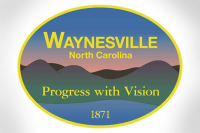Central’s situation raises relevant issues
 The imminent closing of Central Elementary School in Waynesville is fueling heated debate on many fronts. A small school in many ways is like a sun around which the lives of children, families, teachers, cafeteria workers and a community orbit, a center that brings purposeful togetherness to an otherwise random group of people.
The imminent closing of Central Elementary School in Waynesville is fueling heated debate on many fronts. A small school in many ways is like a sun around which the lives of children, families, teachers, cafeteria workers and a community orbit, a center that brings purposeful togetherness to an otherwise random group of people.
That’s the human element, and most of those in that orbit are hurting badly right now. But a school is also an arm of government that is paid for by our tax dollars. That money should be spent wisely. Central is very small and losing more students each year, the economies of scale tipping out of balance as children move to other schools, as families decide to home school or go to a charter school, as kids age up and go to middle school and fewer elementary age families move into the district.
There’s no other way to say this except that I want it both ways: I want small, neighborhood schools and their warm, nurturing ways to remain a viable education option. I believe our egalitarian public school system has helped shape our unique American identity. But I also don’t want to pay to keep a school open if the student population doesn’t warrant it and my tax money is not being wisely used.
That conundrum is not so easy to reconcile, but there are some conclusions that we can draw from what is happening now.
First is the need for school leaders in Haywood County and elsewhere to do more forecasting of demographic expectations and public discussion of educational options. If Central Elementary is closing and most of the other Haywood elementary schools are not at capacity, should we be planning now for another closing? And if the system is losing students to charters and private schools and home schooling, perhaps it’s time to do a marketing study. I know that is not what public schools normally do, but we need to know what people like about the school system and what would make them like it better. As school choice options grow, public schools are going to have to fundamentally change their mindset and begin to work harder to keep students. Like it or not, that’s the new normal.
Would a science and math school get some of those kids back? Is there some other cutting edge, unique educational concept that education leaders in Haywood could try? Can Haywood schools make some of the budget shortfall back by renting Central to a charter or private school?
Related Items
Another takeaway from this is to hold your legislators accountable and don’t believe what they say about education, get the real story. The truth is that the GOP-led state legislature has drained our schools. Overall education spending is up since they have controlled the Legislature, but most of those increases have been eaten up by teacher pay — substantial raises for starting teachers, but only small increases for most experienced educators as medical costs and years on the job have incrementally increased salaries. Our teachers are still in the bottom three or four states in the country in terms of salary. North Carolina is anything but a bottom three or four state.
The increases lawmakers say they gave to education are, technically, real; however, those increases have been barely enough to keep up with salaries. That means per pupil spending for things like teacher assistants, textbooks, buildings, technology and other necessities has decreased. That’s the real problem.
(Scott McLeod can be reached at This email address is being protected from spambots. You need JavaScript enabled to view it..)
Last modified on Wednesday, 03/02/2016









